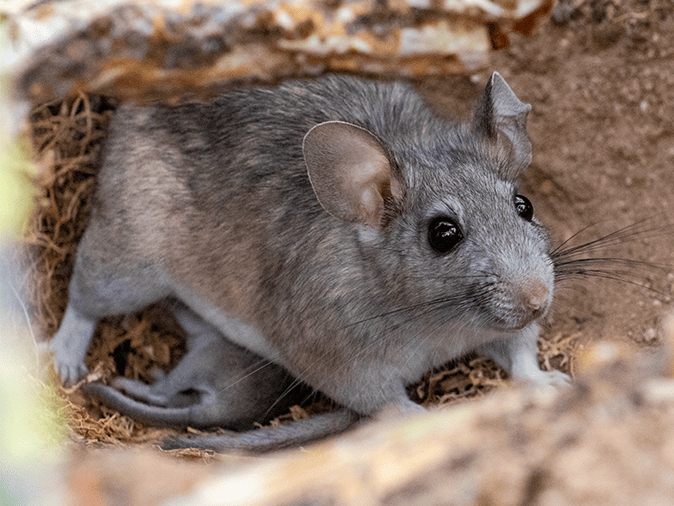
What do wood rats look like?
Wood rats in Arizona, also called pack rats, have bodies that are approximately 6-7 inches in length, tails that add another 5-6 inches to their total length, large ears, large dark eyes, and long furry hair on their bodies. Their tails are also sparsely covered with hair. Their fur is soft and colored brown to gray with their bellies being lighter in color. They have long hind legs and short front legs.
When are rats most active?
Life cycle of wood rats
Live young
Breeding occurs primarily in the spring with 1-5 litters per year. Litters can have one to four young. A litter is born after a gestation period of 33 to 39 days. Pack rats live singly unless mating or rearing young. They can be found in dens close to the ground 3-5 feet in height and diameter. Some species build nests in trees.
Habits of wood rats
- Diet: Feed on seeds, grasses, and other vegetation.
- Activity: Nocturnal
- Preferred Climate: Dry environments since they get moisture from the foods they eat
- Defense: Speed, agile climbing, and some species will jump
- Cautions: Nests can have fleas that carry diseases. Rats are also known to carry disease and should not be handled.
- Home Invasion: Pack rats will enter homes in search of food through small exterior openings. They are attracted to shiny objects.
Are wood rats dangerous?
Hantavirus is a virus found in rodent urine, saliva and feces. It will infect lungs and can cause HPS (Hantavirus Pulmonary Syndrome). The first symptoms will begin about two weeks after exposure to mice and will include:
- High fever
- Body aches
- Chills
- Trouble breathing
- Abdominal pain
- Lower back pain
A couple of days after these symptoms start, severe respiratory distress will begin and lungs will shut down. HPS is very serious but with advanced medical care, most people do survive the infection.
Where do wood rats nest?
Wood rats often nest in homes and outbuildings like barns and sheds.
Helpful hints about wood rats
To prevent wood rats from infesting your home or business, our local exterminators recommend the following rodent prevention tips:
Seal openings that rodents can fit through
Inspect the perimeter of your home or structure for possible nesting sites
Sign up for Northwest Exterminating's Desert Guard to keep rodents out!
Interesting facts about wood rats
Wood rats have a penchant for pilfering household items, especially shiny ones. They also feed on the leaves, stems, and seeds of poison ivy without any health issues.
How do you get rid of rats?
If you’ve found signs of a rat problem in your home or business, don’t waste time with DIY products. Contact Northwest Exterminating for effective rodent control services that target rats and other rodents!

Testimonials
Request Your FREE Estimate
Have questions or need help getting rid of wood rats or other pests? Simply complete the form below or give us a call!



